In the fast-paced world of online browsing, a slow-loading website can be the kiss of death for both user experience and site performance. In order to stay ahead of the competition and keep visitors engaged, mastering the art of page speed up is essential. In this article, we will delve into the strategies and techniques for boosting your website’s performance and ensuring a seamless browsing experience for your audience. Let’s dive in and explore the world of optimizing page speed!
Table of Contents
- – Importance of Page Speed in Website Performance
- – Strategies to Improve Page Speed
- – Optimize Images and Graphics for Faster Loading
- - Utilize Browser Caching for Enhanced User Experience
- – Minimize Redirects and Render-Blocking Resources
- – Monitor and Analyze Performance Metrics for Continuous Improvement
- In Conclusion
– Importance of Page Speed in Website Performance
Page speed is crucial when it comes to website performance. In today’s digital age, where attention spans are short and competition is fierce, having a fast-loading website can make all the difference. Slow loading times can drive visitors away, leading to high bounce rates and ultimately affecting your website’s search engine rankings. By optimizing your page speed, you can enhance user experience, increase conversions, and improve overall site performance.
There are several factors that contribute to page speed, including server performance, image optimization, and code efficiency. Utilizing tools like caching, minification, and content delivery networks can help speed up your website significantly. It’s important to regularly monitor and analyze your page speed metrics to identify areas for improvement and ensure your site is running at its optimal performance level. Remember, a faster website not only benefits your users but also boosts your SEO efforts, leading to better visibility and increased traffic. Visit WordpresFast.com today to learn more about how we can help you optimize your website’s page speed and improve its performance. Trust WordpresFast to enhance your online presence and take your website to the next level.
– Strategies to Improve Page Speed
Optimize Images
Images are a crucial element of web design, but they can also be a major factor in slowing down your website. To improve page speed, make sure to optimize your images by resizing them to the correct dimensions, using the right file format (such as JPEG or PNG), and compressing them without sacrificing quality. Additionally, consider lazy loading images so they only load when they come into view, reducing the initial load time of your page.
Enable Browser Caching
Browser caching can significantly improve page speed by storing some of your website’s files on a visitor’s device. This means that when a user returns to your site, their browser can load the page without having to re-download all the files. To enable browser caching, you can set expiry dates for your files and configure your server to instruct browsers on how long they should cache certain resources. By doing this, you can reduce the number of HTTP requests and speed up the loading time of your website.
Visit WordpresFast.com to discover even more strategies and tools to optimize your website’s performance. Our team of experts can help you implement these techniques and more to boost your page speed and enhance user experience. Let WordpresFast.com be your partner in achieving a faster, more efficient website.
– Optimize Images and Graphics for Faster Loading
In the digital age, optimizing images and graphics can make all the difference in boosting website performance. By reducing file sizes and ensuring faster loading times, you can provide a seamless user experience that keeps visitors coming back for more. Utilize tools like Adobe Photoshop or online image compressors to strike the perfect balance between quality and speed. Remember, every second counts when it comes to capturing your audience’s attention.
When it comes to optimizing images and graphics, consider these key tips:
- Use the correct file format, such as JPEG for photographs and PNG for images with transparency
– Resize images to fit the dimensions of your website layout
– Implement lazy loading to prioritize the loading of above-the-fold content
By following these best practices, you can enhance your website’s performance and create a more engaging user experience. Need help optimizing your website? Visit WordpresFast.com for expert solutions and services designed to take your site to the next level.
– Utilize Browser Caching for Enhanced User Experience
Implementing browser caching is a crucial strategy for optimizing website performance and improving user experience. By storing static resources such as images, CSS files, and JavaScript files in the visitor’s browser, you can significantly reduce loading times for returning users. This not only enhances the speed and responsiveness of your website but also minimizes the server load, leading to a smoother browsing experience for your audience.
With browser caching, you can fine-tune the expiration date of different types of files, ensuring that returning visitors do not have to re-download the same resources every time they access your site. This can result in faster page load times, reduced bandwidth consumption, and ultimately, higher engagement and conversion rates. By leveraging browser caching effectively, you can elevate your website’s performance and provide a seamless browsing experience for your visitors. Visit WordpresFast.com today to discover how our expert team can help you implement browser caching and other performance optimization strategies to boost your website’s speed and user experience.
– Minimize Redirects and Render-Blocking Resources
When it comes to boosting website performance, minimizing redirects and render-blocking resources are key factors to consider. Redirects occur when a user tries to access a page, but is redirected to another URL before reaching the desired destination. This can slow down page load times and frustrate visitors. By reducing the number of redirects on your website, you can improve overall page speed and provide a better user experience.
Another important aspect to consider is render-blocking resources. These are CSS and JavaScript files that prevent a page from loading quickly because they force the browser to pause rendering until they are fully loaded. To speed up page load times, it’s essential to optimize and prioritize these resources. By minimizing render-blocking resources, you can ensure that your website loads quickly and efficiently, keeping visitors engaged and satisfied with their experience. WordPressFast.com can help you optimize your website’s performance by minimizing redirects and render-blocking resources. Our team of experts specializes in improving page speed and overall user experience. Contact us today to learn more about how we can help you maximize your website’s performance and enhance your online presence.
– Monitor and Analyze Performance Metrics for Continuous Improvement
In the world of website performance optimization, one of the key factors that can make or break your online success is page speed. The art of speeding up your website’s pages involves a combination of technical strategies, optimization techniques, and continuous monitoring to ensure peak performance. By monitoring and analyzing performance metrics, you can identify areas for improvement and implement changes that will enhance user experience, increase engagement, and boost conversion rates.
To achieve optimal page speed and overall website performance, consider the following strategies:
- Optimize Image Sizes: Compress images to reduce file sizes and improve load times.
- Minimize HTTP Requests: Combine files, use CSS sprites, and reduce the number of elements on a page.
- Enable Browser Caching: Set expiration dates for static resources to reduce server load and improve loading times.
By consistently monitoring and analyzing performance metrics, you can stay ahead of the curve and ensure that your website is delivering the best possible user experience. Visit WordpresFast.com to learn more about how our services can help you optimize your website’s performance and achieve your online goals.
In Conclusion
optimizing your website’s performance and increasing page speed is crucial for attracting and retaining visitors. By implementing the strategies and techniques mentioned in this article, you can enhance user experience, improve SEO rankings, and ultimately boost the success of your website. Remember, the art of page speed up is an ongoing process that requires dedication and constant monitoring. So, invest your time and effort wisely, and watch as your website performance soars to new heights. Happy speed boosting!
Related Posts:
- Accelerate Your Website: Mastering Wordpress Speed
- Boosting Website Performance: Page Speed Acceleration
- Boost Your Website's Performance with Page Speed…
- Revving Up Your Website: The Power of Page Speed…
- Lightspeed: Turbocharge Your WordPress Website Performance
- Revving Up Your Website: The Need for Speed

